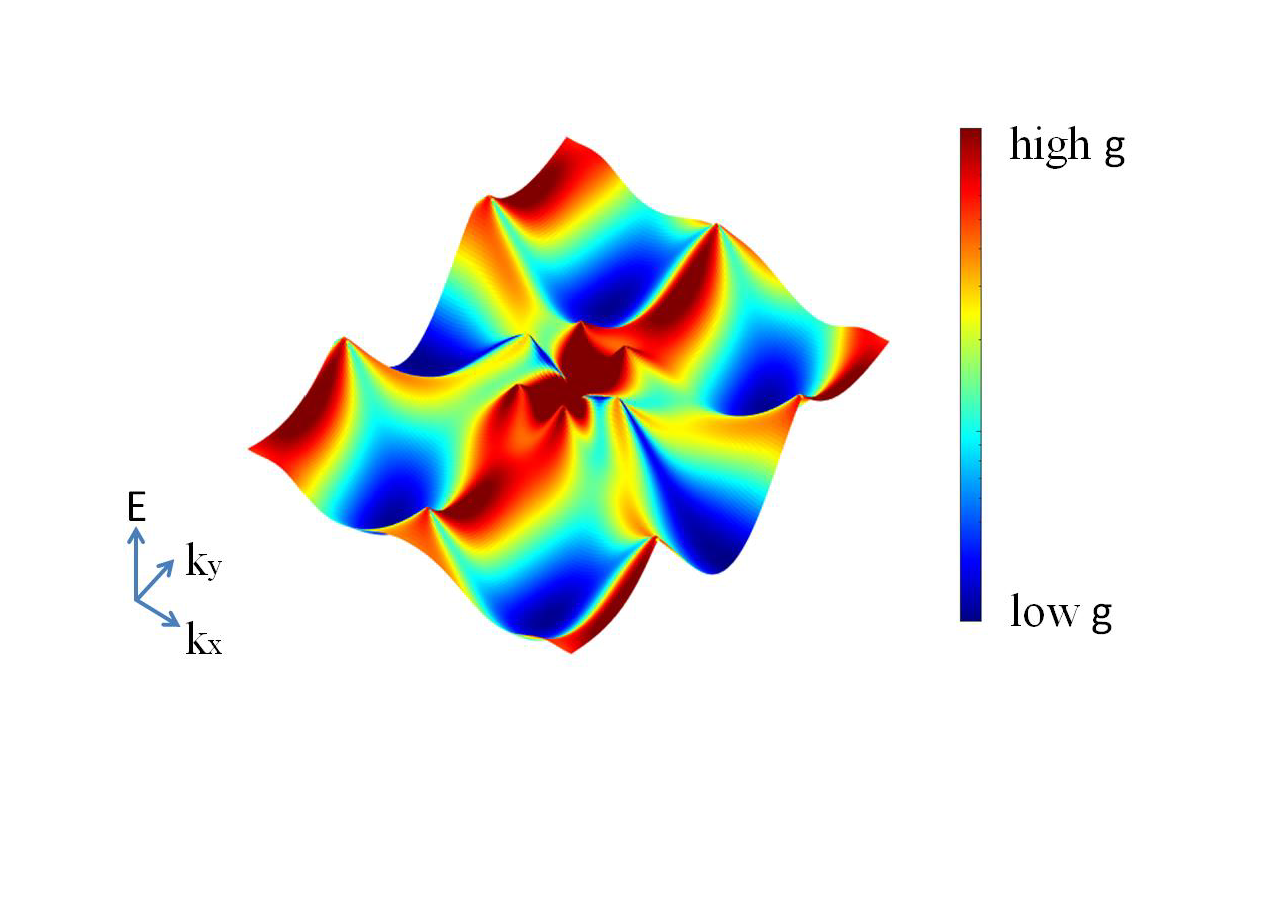News

The dispersion of lowest energy band in twisted bilayer graphene. The color code shows the contribution to the superfluid weight which arises due to the quantum geometry of the Bloch wave functions.
Phys. Rev. Lett. 123, 237002 (2019)
A paper coauthored by Prof. Timo Hyart from MagTop reports a theoretical study how quantum geometry helps electrons to superconduct in twisted bilayer graphene. In twisted bilayer graphene the electrons have small kinetic energy and therefore the interactions between electrons become more important and can lead to a formation of a superconducting state. However, this lack of movement of the electrons should prevent them from carrying supercurrents. This work resolves this apparent paradox by showing that in magic angle twisted bilayer graphene the electrons can use a “quantum detour” to superconduct. The presence of such a “quantum detour” is due to the nontrivial quantum geometry of the flat bands of twisted bilayer graphene.
“Quantum mechanics keeps on surprising us. You would think that current cannot flow if the particles do not have kinetic energy. It is amazing that this intuition is wrong, and we found that such physics is actually important for the recent observation of the superconductivity in twisted bilayer graphene. This is an experiment which was chosen as the Physics World 2018 Breakthrough of the Year”, Prof. Hyart comments.